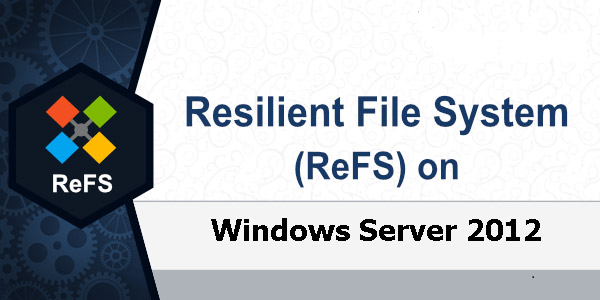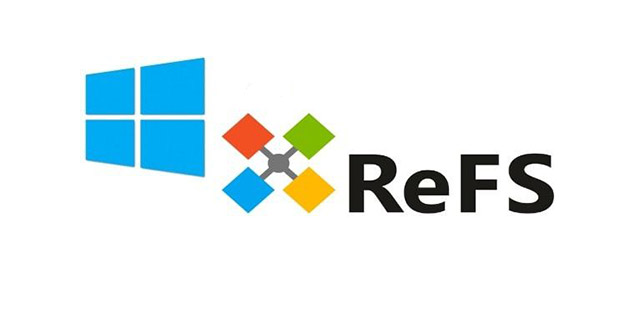In Windows Server 2012, a new file system was introduced, called Resilient File System (ReFS).
- 10 new features in Windows Server 2012
Important properties of ReFS
Important properties of ReFS include:
- Maintain high levels of data availability and reliability, even when individual storage devices fail.
- That provides a full, flexible architecture when used in conjunction with Storage Spaces. When used together, ReFS and Storage Spaces provide enhanced resilience to storage device-related failures.
Important functions of ReFS
Important functions of ReFS include:
Integrity: ReFS stores data in a way that protects it from many common errors, which can often cause data loss. When ReFS is used in conjunction with a failed mirror or parity space, both metadata and user data (when integrity protection is enabled) can be automatically repaired, using Alternative copies are provided by Storage Spaces. In addition, there are Windows PowerShell cmdlets (Get-FileIntegrity and Set-FileIntegrity) that you can use to manage settings for data integrity protection and drive auditing.
Availability: ReFS prioritizes the availability of data. Historically, file systems have been prone to data corruption that may require the system to go offline for repair. With ReFS, if something goes wrong, the repair is done right at the location of the fault and done online, with no downtime required. Although it’s very rare, if a drive fails or you don’t use it with a mirror or parity space, ReFS performs these corrections, a feature that deletes corrupted data from the namespace on a live volume. and ensure that good data is not affected by corrupt and irreparable data. RFS does not have an offline chkdsk command because it performs all repair operations online.

Scalability: As the amount and size of data stored on computers continues to grow rapidly, ReFS is designed to work well with extremely large data sets (petabytes and larger) without compromising efficiency. Not only is ReFS designed to support volume sizes of 2^64 bytes (as allowed by Windows stack addresses), but ReFS is also designed to support larger volume sizes up to 2^78 bytes, using a cluster size of 16 KB. This format also supports file sizes 2^64 – 1 byte, 2^64 files in a directory, and several directories on the drive.
Proactive error correction: ReFS’s integrity capabilities are inherited by a data integrity scanner, also known as a scrubber. The integrity scanner scans the drive on a regular basis, detecting potential errors and initiating the repair of corrupted data.
When the metadata for the ReFS folder is corrupted, the subfolders and the files associated with them are automatically restored. ReFS identifies and recovers files while ReFS is still online. Corrupt and unrecoverable ReFS directory metadata only affects files located in the directory where the error occurred.
ReFS includes a new registry entry, called RefsDisableLastAccessUpdate, which is equivalent to the previous NtfsDisableLastAccessUpdate registry entry. Data integrity protection and auditing are enabled via new archiving commands in Windows PowerShell named Get-FileIntegrity and SetFileIntegrity.
Reference:
- How to use Group Policy to install client software from Windows Server 2012 R2
- Control Panel can be accessed in six different ways on Windows Server 2012
- Instructions for creating a Domain Controller (DC) on Windows Server 2012




